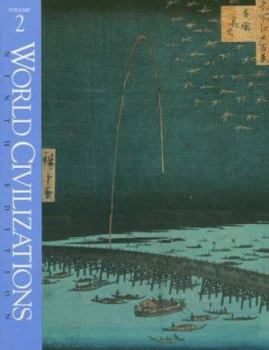Book Overview
The new Ninth Edition maintains the qualities that have made it a success, while incorporating new material that enriches the text's global coverage and comparative approach. The text also boasts an... This description may be from another edition of this product.
Format:Paperback
Language:English
ISBN:0393968812
ISBN13:9780393968811
Release Date:February 1997
Publisher:W. W. Norton & Company
Length:960 Pages
Weight:2.80 lbs.
Dimensions:1.3" x 7.2" x 9.3"
Customer Reviews
1 rating
World history matters
Published by Thriftbooks.com User , 15 years ago
"World Civilizations: Their History and Their Culture" (6th ed., 1982) by Burns, et al., is a college-level textbook covering world history from the earliest civilizations 5000 years ago (in the valleys of the Nile (Egypt), Tigris and Euphrates (Mesopotamia), Yellow (China) and Indus (India) Rivers) to our present technologically and economically advanced global society. In a notable effort to provide comprehensive coverage of world cultures, the authors interweave Asian (mainly India, China and Japan) and African history, and sections on Latin America, the Middle East, Australia and other countries, with a circa-1980s approach to historical interpretation focused largely on tracing the development of Western civilization from Ancient Greece and Rome, through the Renaissance and Enlightenment in Europe, to the rise of the U.S. and Soviet Union as dominant military-industrial superpowers. Overall, the 1400-page work is a substantive, readable presentation spanning a broader cultural spectrum than popular and more Western-centric treatments (such as those by H.G. Wells and Will Durant) written a generation or two ago, yet clearly less integrated and balanced than recent textbooks (e.g., "World Civilizations: The Global Experience" by Stearns, et al., 2007). Viewing world history and societies through the framework provided by the authors, I highlight three key determinants of the course of civilization: Social Demographics: From the earliest Homo sapiens in the Paleolithic era about 50,000 years ago, humans have distinguished themselves both biologically from other species of animals and socially from other groups of humans. As much as the explosive growth of the human population impacts our world's ecosystem--from a rate of increase of only 9% per century from 0 A.D. (200 million people) to 1800 (978 million), to a growth rate more than 25-fold higher at 250% per century in recent times (1.65 billion in 1900, leaping 6.7 billion today)--the tendency of humans to segregate themselves into clans and tribes, often representing conflicting interests, determines how civilizations flourish, struggle and perish. Borders drawn between India and Pakistan in 1947, or Israel and the surrounding Arab countries in 1948, evidence the continuation of ethnic and social turmoil in these regions and, more generally, the unfortunate inability of tribes of us humans, simply put, to "get along." Cultural Influences: Tracing of settlement patterns throughout history reveals the profound impact that foreign cultural influences have on how societies develop. One striking example is the divergent paths of South American and North American societies over the past five centuries. When European explorers discovered the Americas around 1500, South and Central America were home to the more advanced (Aztec, Mayan and Inca) civilizations. In the 16th century, Spain introduced to South America their semi-feudal, Middle Ages-oriented institutions built on a colonial






